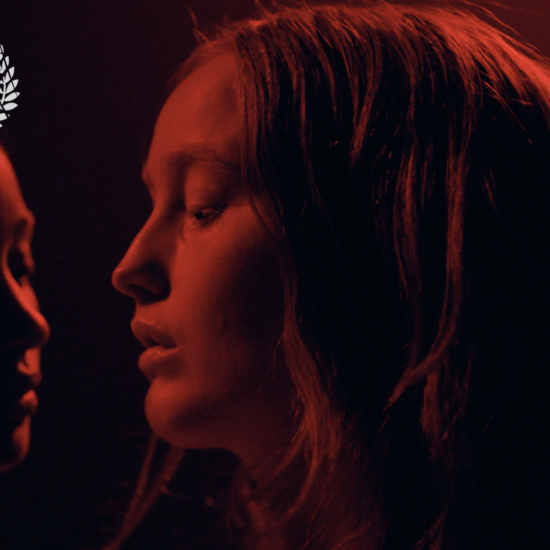
You can smell what’s happening in “Starve Acre” before you puzzle the rest of it out. The grassy, peaty dampness of its rural Yorkshire setting seems to hit the olfactory glands without any scratch-and-sniff assistance, only intensifying as the film unearths its literally deep-buried secrets. Daniel Kokotajlo‘s impressive second feature unfolds in a vein of British folk horror that has been popular of late — with films from Ben Wheatley’s “A Field in England” to Mark Jenkins’s “Enys Men” all tapping into that retro “Wicker Man” eeriness — but rarely with such rattling sensory specificity or formal refinement. Starring Morfydd Clark and Matt Smith as former townies unprepared for the full burden of lore they inherit with their desolate farmhouse, it’s a tale of quite outlandish fantastical leaps, grounded by the chills it also finds in common weather and wildlife.
Premiering in the main competition at this year’s London Film Festival, “Starve Acre” marks a somewhat unexpected pivot for writer-director Kokotajlo from his superb 2017 debut “Apostasy,” a tough-minded study of religious conflict in a modern Jehovah’s Witness family that traded in unsparing realism. (You could say both films are fascinated by matters of obsessive, cultish belief.) As it turns out, he’s equally adept with genre whimsy of a punishingly dark stripe — hewing closely to the very literate English gothic of Andrew Michael Hurley’s well-regarded 2019 source novel — while still wielding the sparse filmmaking rigor of his first film. It’s freaky and frightening enough to draw distributor interest, aided by fine, all-in performances from its name leads, though it firmly occupies an equivalent art-horror niche to Clark’s 2019 vehicle “Saint Maud.”
The particular tea-stained finish of Adam Scarth’s cinematography — drenching the film in a kind of year-round fall fug — is our first clue that “Starve Acre” is set in a 1970s Britain of drab economic severity and parochial tightness, even before costume designer Emma Fryer’s knobbly knits and Francesca Massariol’s tan, timber-tastic production design underline the point. The film is thus set in the precise era when many of its most obvious influences, including “The Wicker Man” and “Don’t Look Now,” would have been on cinema screens — not that anybody’s going to the movies in this remote, wind-whipped enclave, where even television seems a slightly anachronistic imposition on the local lifestyle, fitting only when the faulty local signal collapses the image into blaring static.
Lank-haired archaeology lecturer Richard (Smith) grew up in the area, and has recently returned to his childhood home — the inauspiciously named Starve Acre — with his wife Juliette (Clark), with the supposed intention of giving their young son Owen (Arthur Shaw) a freer, more idyllic upbringing. What Richard hasn’t told Juliette is that his own memories of the place aren’t happy at all. Haunted by his late father’s unusually abusive behavior, he pores over the dead man’s effects, revisiting and perhaps inheriting Dad’s obsession with sinister local mythology regarding their own land — including stories of a demonic sprite called Jack Grey, and tell of an ancient, vanished oak tree of transformative pagan significance.
When Owen, not party to any of this, claims to hear whisperings from one Jack Grey, Richard should perhaps be more worried; instead, his suspicions run to longtime neighboring farmer Gordon (Sean Gilder, deftly veering between bluff and aggressive), another local keeper of folklore. And when a worse fate befalls Owen, Richard and Juliette retreat into themselves — and into the occult — in separate ways. As they do, uncanny new signs of life emerge around Starve Acre, beginning with the yellowing hare skeleton that Richard discovers on the premises — and which, via some marvelously icky effects work, stubbornly resists its ashes-to-ashes fate.
As all life begins to tilt out of whack, Kokotajlo permits his hitherto stark narrative to sprout and twist and fester into chaos. It’s for the audience — likely latching onto the viewpoint of Juliette’s visiting, comparatively sensible sister Harrie (Erin Richards) — to decide how literally to take the film’s plunges into the supernatural. These could function equally as waking-dream metaphors for grief and trauma, those two pillars of contemporary horror, or more intriguingly, as gnarly new realities for a shattered family rebuilding itself around a different natural order.
Taken either way, the film delivers straight-up scares and low, lingering atmospheric dread in muddy spades: This is not predominantly a film of nighttime fears, with Scarth’s lensing finding rather more terror in the flat, muzzy gray light of a Northern afternoon, or the moldering browns of a house’s most ordinary but unloved corners. The volatile, dissonant score by Matthew Herbert (a valuable contributor to last year’s “The Wonder”), meanwhile, is a continual astonishment, its appropriately chamber-folky instrumentation often swelling and contorting into glassy shrieks — as if on behalf of the more repressed characters on screen. No one person in “Starve Acre” screams, speaks or behaves quite as people should, which is key to the film’s baleful pull: Kokotajlo, at least, brings a fierce discipline to its disorder.













